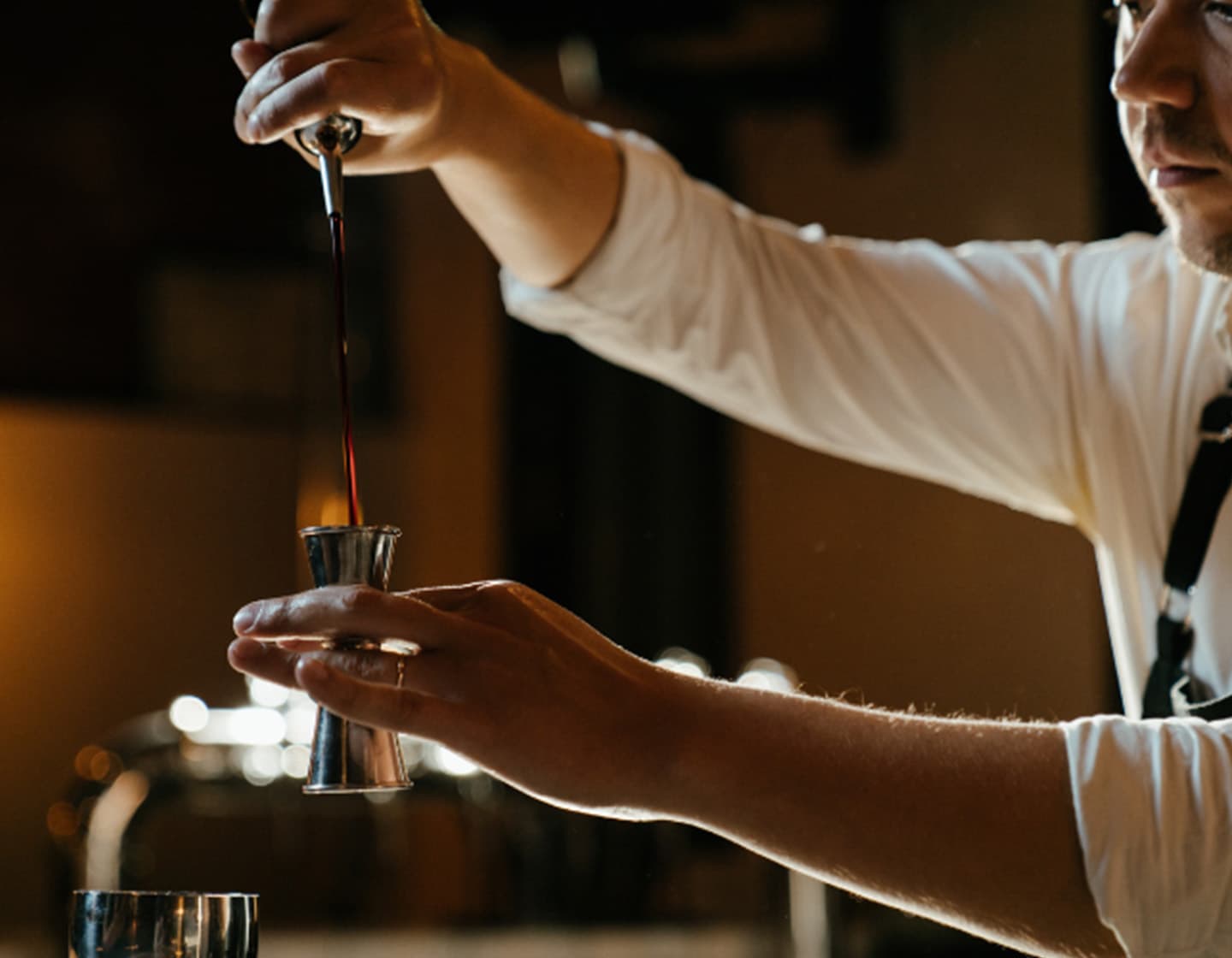Bar Skills: How To Use A Jigger Like A Pro
The jigger is a common sight in bars and restaurants worldwide, a testament to its enduring importance in the world of beverages and mixology. While it might appear to be a simple tool, the jigger's design, history, and function tell a richer story about the art of drink-making and its evolution over time.
Estimated reading time: 5 minutes
Why is it Called a Jigger?
The term "jigger" has been used in various contexts and with various meanings over the years. In a drinks context, there are several potential origins of the term, ranging from the measure of rum given to sailors of the British Navy to a variant on the word “thingamajig” – meaning an object with no other name!
Regardless of origins, by the end of the 19th century, metal jiggers were replacing the sherry glasses previously used to measure spirits and by 1893, Cornelius Dungan of Chicago patented the now ubiquitous double-sided design which would go on to become the bartender's best friend. (Dungan, 1893)
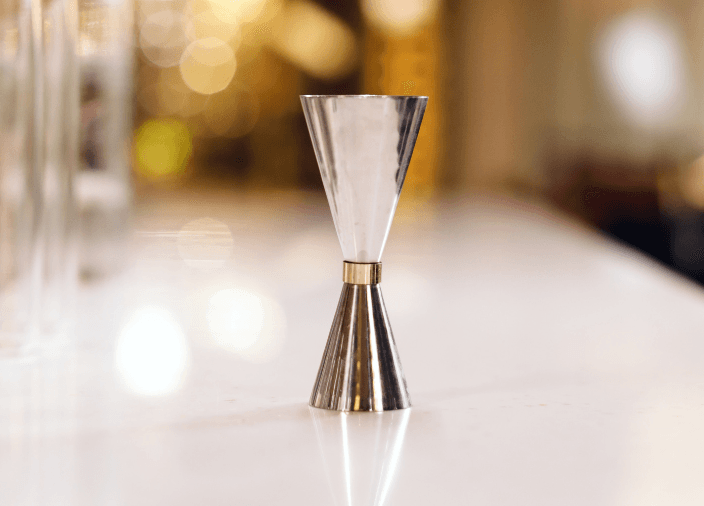
Styles and Measurements
Over the years, the design and style of the jigger have seen many variations, but the essence remains consistent. A jigger is typically either a single cup or cone, or two of different sizes joined at their bases. The smaller cone, sometimes historically known as a "pony," typically holds a smaller measurement while the opposite side holds a larger volume. The measured volumes can vary between styles, countries and personal or bar preference so it is very important to always know what measurements you are working with as well as the standard pour sizes in your country and bar.
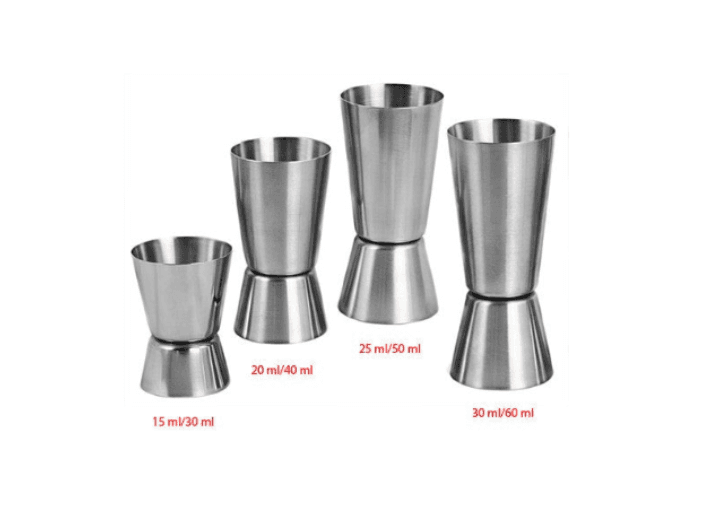
Common Measurements
- 15ml/30ml
- 25ml/50ml
- 30ml/60ml
- 0.5oz / 1oz
- 0.75oz/1.5oz
- 1oz/2oz
Today's jiggers come in a variety of materials, from stainless steel and copper to glass and plastic. There are also variations in design, with some jiggers featuring additional measurement lines inside the cones to allow for even more precise measurements. Others might feature handles, rubber grips or other aesthetic embellishments or design quirks.
Popular Styles
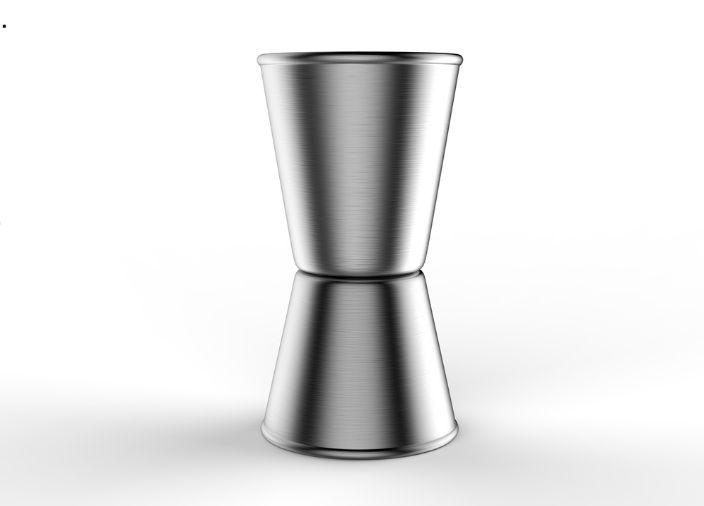
Classic
Available in several iterations of varying levels of quality and functionality, the classic bar jigger is usually fairly squat with a wide flare. As a rule of thumb, the more widely flared the mouth of the cone, the harder they are to work with as quick movement is difficult without spillage and the wide flare means small discrepancies in pouring have big implications on accuracy. (Morgenthaler, 2014)
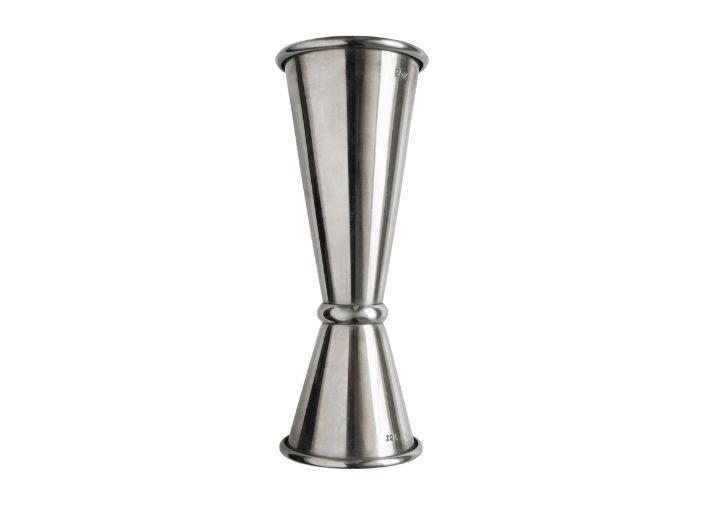
Japanese
The tall, narrow shape of the Japanese-style jigger makes for easier, faster and more precise measurement and pouring. They are a popular choice amongst professional bartenders as the slim-line design makes quick, dextrous use possible and the narrow flare means small over or under-pours have less impact on accuracy. (Morgenthaler, 2014)
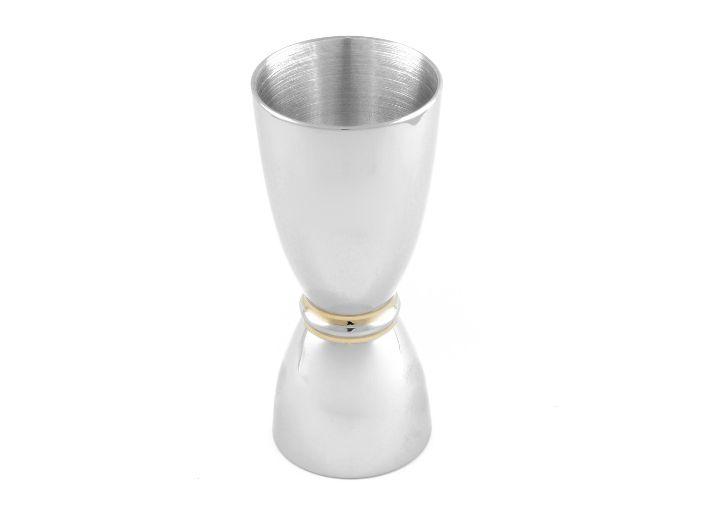
Bell
The Bell Jigger blends classic, vintage styling with a wide flare and the more efficient ergonomics of the narrow mid-section which allows for easier grip and movement.
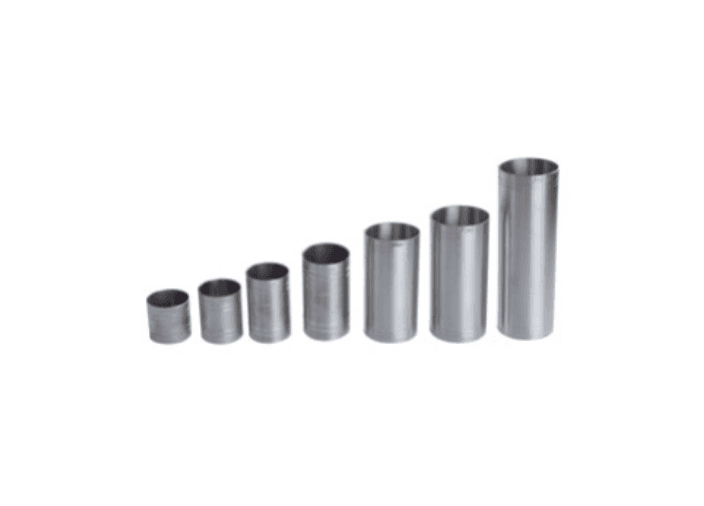
Thimble Measure/Pub Jigger
Available in a large range of sizes all the way up to wine glass measurements (175/250ml). Due to their no-frills functionality, these single-sided measures are often seen in more “everyday bars” while high-end cocktail establishments tend to prefer the aesthetics of vintage or Japanese-style bar equipment – hence the term “pub jigger”.
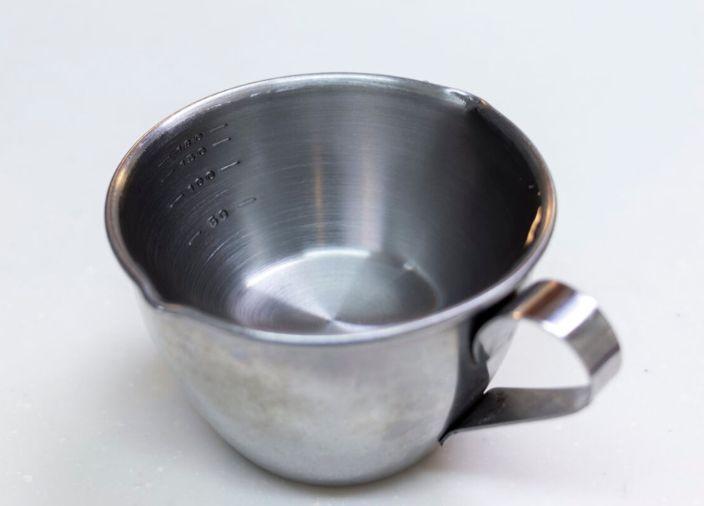
Measuring Cup
The Measuring Cup is essentially a miniature version of the standard kitchen measuring cup. Featuring a greater range of measurement markings (sometimes in both Imperial and metric), they are extremely functional and versatile however they can be slower and clumsier than some other jigger styles.

Using a Jigger
Using a jigger is simple, but it requires a steady hand and an eye for detail. Here’s how:
- Select the Correct Side: Before pouring, ensure you have the desired measurement side facing upwards.
- Pour: Hold the jigger above your mixing vessel or cocktail shaker and pour the liquid until it reaches the brim.
- Add to Your Drink: Quickly invert the jigger to empty its contents into your drink. For more precision, especially with smaller measurements, use a steady hand and pour slowly.
Many bartenders elevate their jigger use with more elaborate techniques such dextrous finger rolls, stylish backhand pours or even working with multiple jiggers simultaneously.
None of these are requirements for accurate jigger work however they do add an element of flair and theatrics and in some cases, a small increase in speed.
It's crucial to note that while the jigger ensures consistency, the actual volume may vary based on the specific design or brand. As a result, bartenders and home enthusiasts should always familiarize themselves with their tools.
The jigger, though simple in appearance, has played a vital role in the world of mixology. It stands as a symbol of precision, consistency, and the craft of creating the perfect drink. Whether you're a seasoned bartender or a casual drink enthusiast, understanding and appreciating the jigger's history and usage can deepen your connection to the timeless art of drink-making.
Key Takeaways
- The jigger's design, history, and function tell a richer story about the art of drink-making.
- In 1893, Cornelius Dungan of Chicago patented what we know today as a ‘jigger’.
- Today. there are 5 main designs of jigger: Classic; Japanese; Bell; Thimble/Pub and Measuring Cup.
- The jigger, while simple in appearance, stands as a symbol of precision, consistency, and the craft of creating the perfect drink.
Receive regular industry news, recipes and inspiration direct to your inbox for free when you sign up to the Diageo Bar Academy newsletter.
